During a House of Commons exchange this morning, Labour MP Graeme Downie (Dunfermline and Dollar) urged the Government to boost support for the proposed defence industrial partnership between Babcock and Saab for the construction of Sweden’s new Luleå-class corvettes, underlining its strategic and economic importance to both UK-Sweden relations and British shipbuilding.
“The UK’s economic relationship with Sweden is among the most important of our European partners, particularly with Sweden recently joining NATO,” said Downie. “Babcock are currently pursuing a partnership with Saab to build four Luleå-class corvettes for Sweden, which would include significant work at Rosyth Dockyard, securing thousands of jobs in my constituency.”
He made clear that the programme could evolve into a joint export product, “bringing considerable further value to the UK,” and asked the minister to confirm the Government’s support for the deal and its importance to UK-Sweden ties.
Douglas Alexander, Minister of State at the Department for Business and Trade and MP for Lothian East, responded warmly, reflecting on his own long-standing awareness of Rosyth’s economic and industrial value: “Having worked so closely with the former Prime Minister Gordon Brown over a number of years, I am probably about the last person in this chamber who needs to be convinced as to the economic significance of the Rosyth dockyard.”
While unable to comment on commercial specifics due to sensitivities, Alexander confirmed that he had met recently with Babcock executives in London and abroad, and acknowledged Downie’s letter to the Secretary of State, to which a reply had already been issued. He stated: “The Government values its defence relationship with Sweden and fully recognises the importance of defence industrial partnerships between the United Kingdom and Swedish companies, which of course, contribute greatly both to our defence and our growth objectives.”
The exchange follows the September 2023 Strategic Cooperation Agreement between Saab and Babcock, under which Babcock was selected to support the design and development of Sweden’s next-generation Luleå-class surface combatants. Babcock’s engineering teams at Rosyth are contributing structural and auxiliary systems expertise to the basic design phase, working alongside Saab’s team in Karlskrona.
In a statement last year, Saab’s Mats Wicksell called the cooperation “an important collaboration between Swedish and British shipbuilders,” while Babcock CEO David Lockwood described the partnership as “hugely important” and highlighted the “collective capabilities in Karlskrona and Rosyth” to deliver a “class-leading design.”


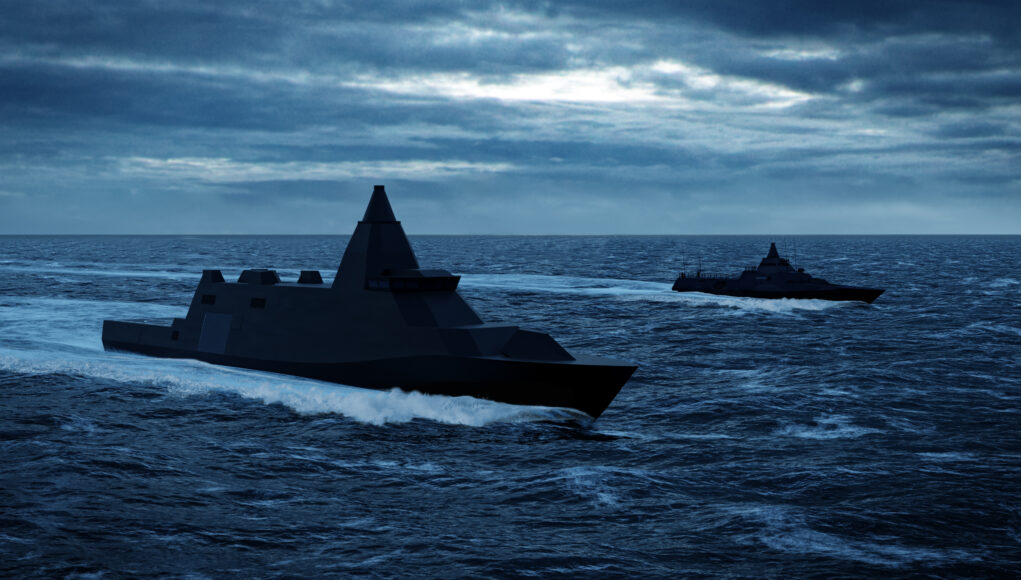
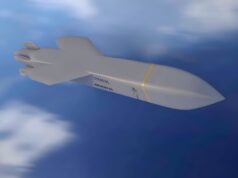
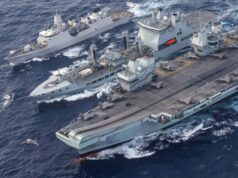
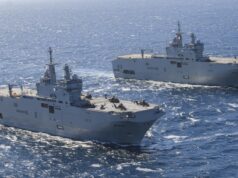

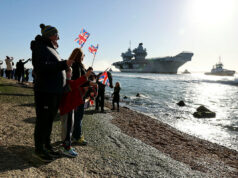


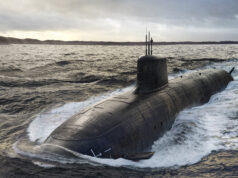
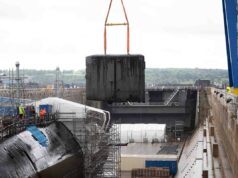
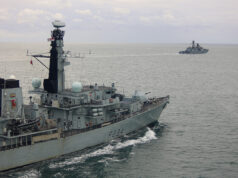

Would this corvette type be of any use for the RN? Smaller than the T31s, could it replace the Rivers B1/P2000s?
Simple answer is no.
Agree and disagree. Maybe a smaller lighter armed version might be a goer. Might be good for other Baltic states, Lithuania, Estonia and Latvia and Black Sea States Bulgaria, Romania and Ukraine even.
bloody hell more money (which is what it comes down to) will be thrown to those appalling black holes that are laughingly referred to as our frigate factory’s what ab out OYRR ORDERS what would be more positive would be a cracking of the whip in those financial black holes. just totally wasted rewarding such utter incompetence taking over 4 years to bang a patrol boat together and both giving the same failing business contracts to build frigates.IM UTTERLY SICK OF READING THIS RUBBISH. the priority in the British defence industry should be targeted .AT HOME.
Why aren’t these troll comments removed? like the non stop ‘ money pyramid ‘ comments?
At 100m in length and displacing 3-4,000t this will be a very big corvette (German Braunschweig’s by comparison are less than 2,000t), doubt it will be much cheaper than more Inspiration Class Frigates. I don’t see the Baltics going for something that big, frankly all three of them seem much more interested in combating the Russians via mining operations than any direct naval confrontation. Bulgaria is also unlikely as they’ve just ordered a few small frigate/large corvette’s from Germany, Ukraine is probably a no as their industrial priorities are elsewhere, and buying from Babcock and sailing it to Ukraine through the Dardanells is a no-no. So… that leaves Romania and I guess maybe?
No. Why would the RN need Corvettes?
Fighty wise, It needs more Frigates, Destroyers, and SSN.
Flying the flag and other roles are ideal for the River B2s.
Sounds like the sort of thing we want to encourage and that could help increase our own shipbuilding capacity.
The brief wiki entry for the Lulea class corvette suggests Sweden wants a minimum length of 120m. Babcock could offer T31 or the Arrowhead 120 hull.
Pretty sure they are doing the design themselves, Babcock will just build whatever they decide on.
A good solid advanced corvette design is a great export opportunity, there are a lot of weathy nations that only want a brown water navy…but want a good brown water navy, not a load of junk or just constabulary vessels. So having the IP for a joint venture with work in British shipyard would be very good for capacity..
Khareef class?
I agree, probably half the opportunity for uk ship builders (amongst others) would be classed as these type of customers and regions so Corvettes to lower end and/or smaller Frigates. A lot of wider potential business from fulfilling them too direct and indirect especially for Babcock that is so involved in managing projects and sites.
Vospers ran a pretty decent business doing exactly this for decades.
A decent mid sized vessel that is Swedish and effectively UK/RN approved would be a good seller.
The Rivers have been a poor exporter as they were just too expensive for what they were.
Problem is not letting this turn into an excuse to not order more RN ships.
To a certain extent Starmer/Resves would like the T26 and this order to come off so they could say ‘yards at capacity’ next problem. Trouble is that doesn’t maintain pipeline to grow RN.
Were the rivers not expensive relative to their capability as they were ordered to maintain a minimum work flow as t26 was delayed? I.e their purchase price if they were purchased competitively opposed to fulfil an obligation?
Generally supportive of this, but do we need to be cautious about the capacity of UK shipbuilding at a time when the RN needs it most?
If capacity could be expanded that would be great, but given the training and equipment costs associated with this, firms will be reluctant to do with without long term reliable prospects. So without that, capacity might just be reallocated away from RN projects.
Hm govt should award further order numbers before the yards become clogged up with overseas orders then.
True.
But capacity is massively improved as both yards have a very big assembly shed and now both yards will have a shed for building storing blocks [Rosyth have just got planning permission to put one up] as well.
The frigate shed at BAE pretty much doubled capacity as all the old facility remains and can be organised for optimal working practices.
It also allows for blocks to be delivered early rather than as the vagaries of time and tide. So they are to hand ready to be consolidated.
Considering they were of huge importance during WWII, why do we not have Corvette’s any more? Surely they would be cheaper than Frigate’s? A ‘new class’ like this, could be used for all manner of things. It could also serve as a ‘testbed’, for more autonomous systems, further reducing the number of crew required to operate them.
A decent type/size warship which could be multi role.
The corvettes were made during the war. We have OPVs for the patrol role but armed corvettes are not cheap and risk Frigate cuts
Totally different levels of technology in basic terms. They used to be handy to peel off from the main ships in the fleet to spot enemies or chase subs and report back at quick speeds. Isnt much use for them in that role these days.
James, WW2 corvettes where anything but quick. Flower and Castle Class Corvettes couldn’t break 17 knots (for Comparison HMS Rodney and Nelson where considered to be extremely slow, and eventually retired out of the battle line because their speed was such a handicap, and they could both make 21 knots). Normal speeds for Cruisers, Destroyers, and Capital Ships where in the 24-31knot range.
Corvettes could get away with being that slow because their only real purpose was to escort slow moving convoys against even slower moving U-boats (which could only make 17 knots on the surface and 7 submerged).
Having 13 decent Corvettes is fine, but the RN would prefer having 13 Frigates, it’s unlikely HMT will let them have both 🤔.
Wartime Corvettes and Modern Corvettes are two very different things.
During WW2 the RN classed both Frigates and Corvettes as Ocean Going escorts with an ASW focus. The difference was that Frigates where ground up designs while Corvettes where modified civilian designes. So the Flower Class: Ocean Going, check, Escort with ASW focus, check, based off of a whaler = Corvette.
Modern Corvettes on the other hand are generally short range surface combatants with some Anti-Surface Warfare capabilities and limited Air Defence Capabilites, usually no Anti-Submarine Capabilities.
Typically they are cheaper than a Frigate, but not by much. Braunschweigs are costing about 400m per ship, the Polish Gawron would have been in the 400million price range if it had been fitted out, the Israeli Saar 6’s are about 500m per ship, Egyptian Gowinds 370m per ship, yes there are cheaper ships, the Visby’s cost 180m per, but they’re also tiny. The issue is that a lot of the really expensive stuff is the sensors and weapons, which need to be similar to a Frigates to be effective, the size and range is advantages are, comparatively, cheap. So Corvettes tend to be built by Navies that need ships that are physically smaller for various reasons (usually if you have a lot of islands, expect to fight close in shore, or have a sea that is almost landlocked, as all of those put some physical concerns on the nature of the ships you can field). It is for example noticeable that the German Navy’s Einsatztflotille 1 is based on the Baltic Sea and is mostly comprised of Korvettengeschwader 1 and the Minesweepers, while Einsatzflotille 2 is based on the North Sea coast and has both Frigate Squadrons under it’s command.
I had assumed from the original 2023 announcement that Babcock was just involved in the design of the corvette. Good news as it gave the design team a new billable job after completing the T31 detailed plans – but hardly earth shattering. However this article implies there might also be some “metal bashing” work for Babcock Rosyth as well. Can anyone give expand on this? The most extreme possibility is that Babcock will build the hulls for Saab to fit out, but its hard to see how Rosyth has the capacity to do that and still deliver all five T31’s by the early 2030’s.